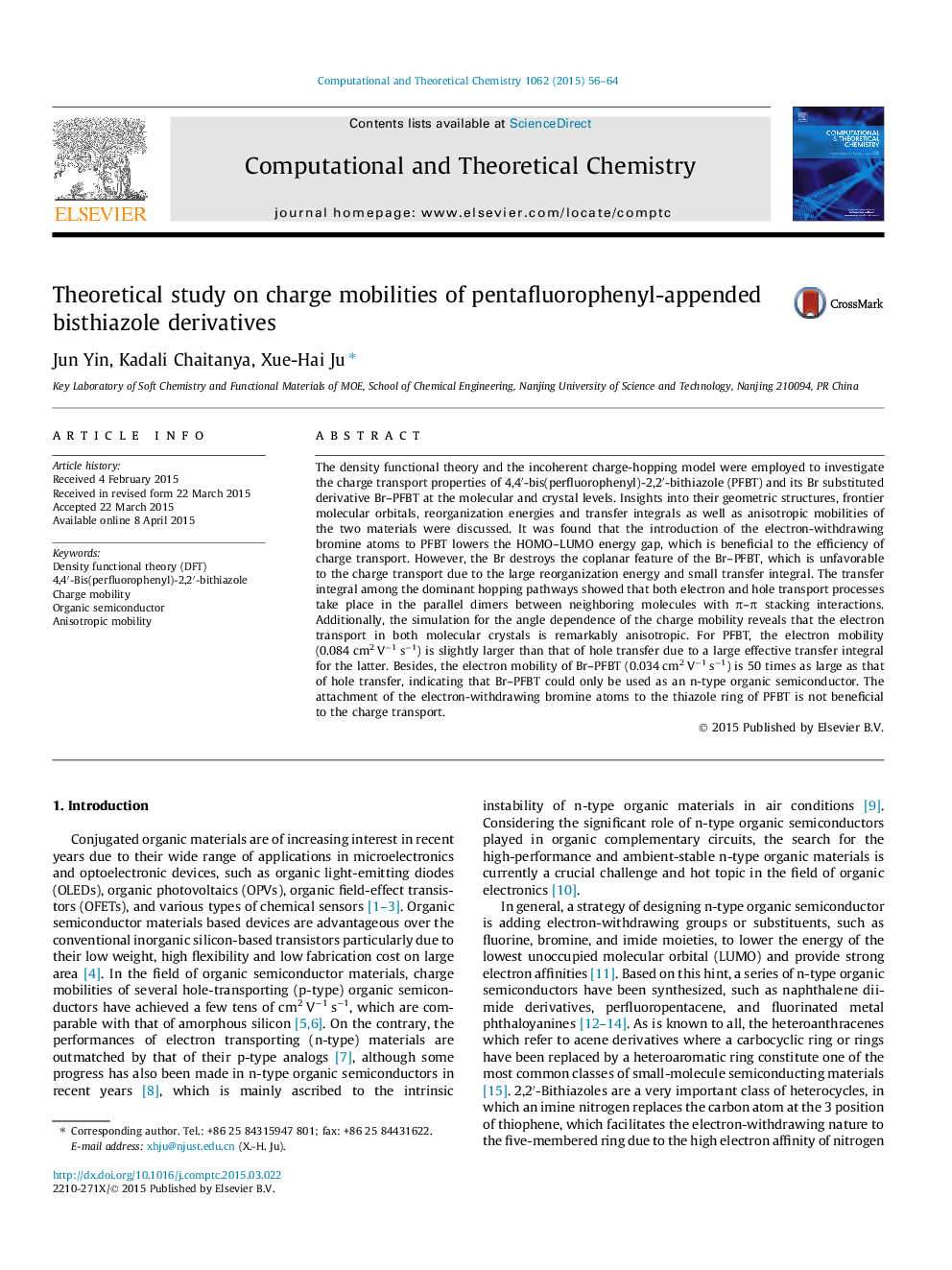| Article ID | Journal | Published Year | Pages | File Type |
|---|---|---|---|---|
| 5393211 | Computational and Theoretical Chemistry | 2015 | 9 Pages |
â¢Charge transport properties of 4,4â²-bis(perfluorophenyl)-2,2â²-bithiazole and its Br substituted derivative were predicted.â¢Angle dependence of charge mobility reveals that the electron transport is remarkably anisotropic.â¢The attachment of bromine atoms to the thiazole ring of PFBT is not beneficial to the charge transport.
The density functional theory and the incoherent charge-hopping model were employed to investigate the charge transport properties of 4,4â²-bis(perfluorophenyl)-2,2â²-bithiazole (PFBT) and its Br substituted derivative Br-PFBT at the molecular and crystal levels. Insights into their geometric structures, frontier molecular orbitals, reorganization energies and transfer integrals as well as anisotropic mobilities of the two materials were discussed. It was found that the introduction of the electron-withdrawing bromine atoms to PFBT lowers the HOMO-LUMO energy gap, which is beneficial to the efficiency of charge transport. However, the Br destroys the coplanar feature of the Br-PFBT, which is unfavorable to the charge transport due to the large reorganization energy and small transfer integral. The transfer integral among the dominant hopping pathways showed that both electron and hole transport processes take place in the parallel dimers between neighboring molecules with Ï-Ï stacking interactions. Additionally, the simulation for the angle dependence of the charge mobility reveals that the electron transport in both molecular crystals is remarkably anisotropic. For PFBT, the electron mobility (0.084Â cm2Â Vâ1Â sâ1) is slightly larger than that of hole transfer due to a large effective transfer integral for the latter. Besides, the electron mobility of Br-PFBT (0.034Â cm2Â Vâ1Â sâ1) is 50 times as large as that of hole transfer, indicating that Br-PFBT could only be used as an n-type organic semiconductor. The attachment of the electron-withdrawing bromine atoms to the thiazole ring of PFBT is not beneficial to the charge transport.
Graphical abstractThe density functional theory and incoherent charge-hopping model were employed to investigate the charge transport properties of 4,4â²-bis(perfluorophenyl)-2,2â²-bithiazole (PFBT) and its Br substituted derivative.Download full-size image
